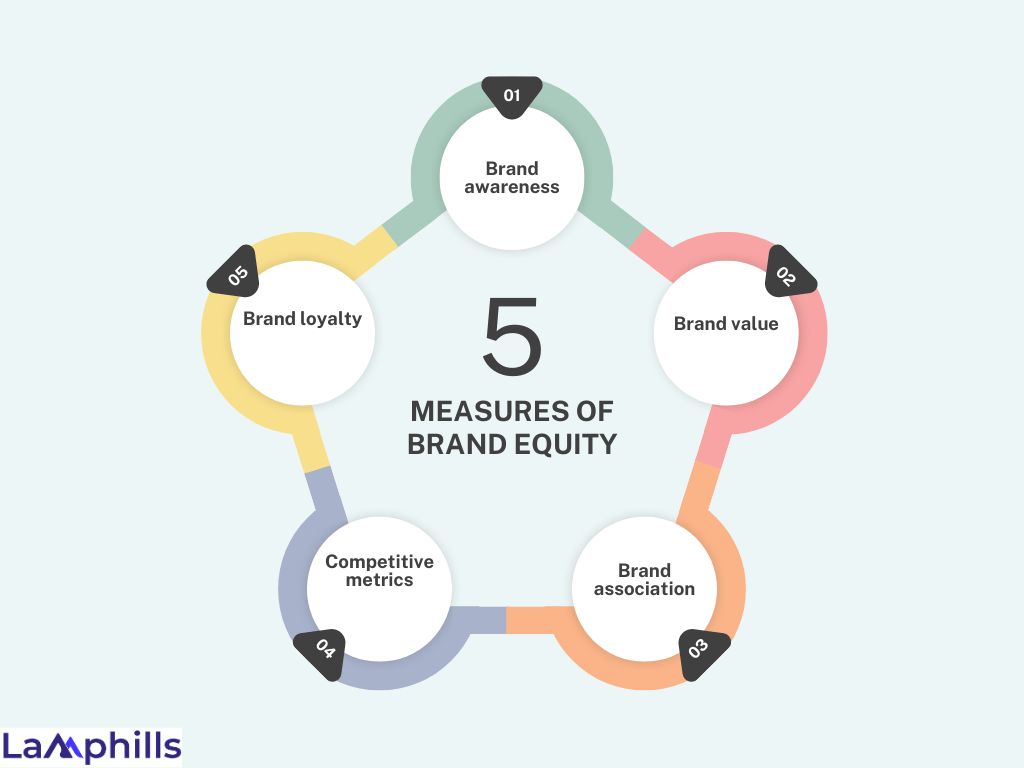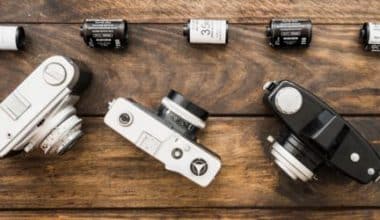As a rookie in the marketplace, you often may have heard about “brand equity.” without knowing what it is. Well, what is brand equity? At its peak, brand equity refers to the value and power that a brand name holds in the minds of customers. A brand with strong equity has more power, allowing it to charge higher prices, attract better talent, and expand into other areas with less effort. Overall, brand equity campaigns, if done well, can be the magic pill for your brand’s growth plan. In this comprehensive guide lie expert tips to measuring brand equity or awareness that resonates with your company goals in 2024.
Key Points
- Brand equity refers to the value and power a brand name holds in the minds of customers, allowing for higher prices, better talent attraction, and easier expansion into other areas.
- Measuring brand equity involves understanding brand reputation, customer perceptions, and market value, which can be positive or negative.
- Examples of brands with strong brand equity include Apple, Nike, and Disney, which have built unique personalities and emotional connections with their target audiences.
- Expert tips for measuring brand equity in 2024 include assessing brand awareness, analyzing market share and sales data, measuring brand loyalty, and evaluating perceived quality through customer reviews and ratings.
How to Measure Brand Equity
It’s no secret that customers are prone to buy a product they trust and know very well. The concept of brand equity leverages the customer’s thinking pattern to yield profitable sales over time.
Brand equity is about knowing the brand’s reputation and value to the market, which can be a measure of either a positive or negative viewpoint. Do you know what it does to a brand? Well, it creates:
- A business environment that favors the business with the highest brand equity.
- Increased sales and profits when customers decide to purchase your brand over a competing one even though it costs more.
Tip: ✍️Brand equity shows how people value your brand and the perception they have about your brand based on excellence and aesthetic appeal.
Brand equity can be illustrated using popular brands. Here are a few examples:
- Apple: What comes to your mind when you see the Apple logo? You tend to associate the logo with cutting-edge technology, sleek design, and innovation; right? Well, that’s because Apple as a brand, has built such strong equity that customers are often willing to pay premium prices thereby cultivating customer loyalty.
- Nike: Customers relate to the “Just Do It” tagline and the iconic “swoosh” logo as indicators of motivation, endurance, and agility. This strong brand equity, as a result, gives Nike the upper hand to command premium prices and maintain a loyal customer base in the competitive athletic market.
- Disney: Disney’s brand equity can be attributed to its charm, creativity, and family-friendly environment. Its reputation lets the company dive into different sectors like movies, theme parks, and merchandise while still boosting and maintaining trust and customer loyalty
💯Top takeaway: In each case, these brands have successfully built unique personalities and deep emotional connections with their target audiences. As a result, they have higher brand awareness, customer loyalty, and market share, which allows them to broaden their reach and impact in their respective industries.
Brand equity refers to the value a brand adds to a product or service beyond its functional benefits. Measuring brand equity can be complex, but it's essential for understanding the impact of your branding efforts and making informed strategic decisions.
Measuring brand equity in 2024 will continue to grow as technology evolves and customer preferences change. Here are some expert tips to measure brand equity:
#1. Brand Awareness
Surveys and questionnaires help you understand how customers identify and recognize your brand. Using social media monitoring mentions, can, however, give you insight on how many likes, shares, and comments your company has thereby boosting brand awareness. You can also use tools like Google Trends to see how often people search for your brand name and similar keywords online.
Questionnaires and surveys can provide useful information about how people perceive your brand. Inquire about customers’ experiences, satisfaction levels, and probability of referring your brand to others.
#2. Analyze Market Share and Sales Data
You can learn more about your brand’s equity by comparing its performance to that of your competitors. A larger market share and constant sales increase show substantial equity in the brand.
Surely! Here’s a concise checklist on how brands can measure equity by analyzing market share and sales data:
By following this checklist, brands can effectively measure equity through a detailed analysis of market share and sales data.
#3. Brand Loyalty
To understand how loyal your customers are, track how many of them return to make repeat purchases. You can also measure loyalty through a Net Promoter Score (NPS) survey, which asks customers how likely they are to recommend your brand to others. Another indicator of loyalty is the frequency of purchases within a given period. Brand loyalty can be achieved by:
- Customer Retention Rates: Track the percentage of repeat customers over time.
- Net Promoter Score (NPS): Measure customer loyalty by asking how likely they are to recommend your brand to others.
- Purchase Frequency: Assess how often customers make repeat purchases within a given period.
#4. Perceived Quality (Brand evaluation)
Another tip to effectively measure brand equity is perceived quality. Collecting and evaluating reviews and ratings from customers on popular platforms like Yelp, Amazon, and Google Reviews can give you insights into how customers perceive your product’s quality. Additionally, pay attention to third-party, however, minimal from industry experts. Monitor and track the rate of product returns and customer complaints to determine perceived quality
#5. Brand strength
Brand strength, or the power of the brand, can be measured by emotional data – the unique value that a brand has developed over time as a result of several encounters.
Equity is a surrogate indicator of the relative level of consumer demand for the brand and is almost synonymous with “attitudinal strength” or “strength in the mind.”
Customer surveys and a series of evaluation questions that gauge a consumer’s relative preference for a brand can be used to get this information.
#6. Competitive Metrics
Understanding your brand equity in the context of your market requires an analysis of competitive data. Using competitor analysis, you may assess how the actions and tactics of your rivals affect the value of your brand and pinpoint opportunities for improvement. Here’s how to go about doing this:
- Determine Important Rivals: Identify the leading companies in your sector that are competing with your brand for the same target market. Pay attention to direct rivals who offer comparable goods or services and those who hold a sizable portion of the market.
- Assessing the position of a brand: Examine the brand positioning that your rivals are using in the marketplace. Analyze their value propositions, USPs, and overall messaging to see how they set themselves apart from your brand.
#7. Brand Associations
Brand associations are equally important. Conduct focus groups and in-depth interviews to understand the meanings and associations customers attach to your brand. You can also use surveys to identify the traits and attributes customers associate with your brand. Reviewing online discussions, articles, and social media posts about your brand can reveal common themes and associations.
How to Measure Brand Equity in Marketing
Brand equity is a marketing concept and performance statistic that describes a brand’s worth. Consumer perception and involvement with the brand are what determine its worth.
When people think highly of a brand, it has positive brand equity. When a brand continually underperforms and disappoints, to the point where people advise others to avoid it, it has negative brand equity.
Demonstrating Brand Equity Using Starbucks
Starbucks is an excellent example of a brand whose equity extends beyond the functional aspects of its products. While the primary function of a coffee shop is to serve coffee and other beverages, Starbucks has built a brand that offers much more than just a drink.
Starbucks’ brand equity is based on its reputation for delivering a consistent, high-quality coffee experience. However, what actually distinguishes it is the ambiance it maintains in its stores. Starbucks’ warm lighting, comfy seating, and attractive atmosphere make it an ideal spot for customers to relax, work, or interact.
Starbucks’ commitment to ethical sourcing, environmental sustainability, and community involvement all contribute to its high brand equity. Customers feel good about shopping at Starbucks because they know that the company is dedicated to making a positive difference in the global community.
Customers are prepared to pay a premium for Starbucks items due to the company’s great brand equity. Although competitors may offer similar drinks at lower prices, customers choose Starbucks for the overall experience and the positive values associated with the brand.
💥Top takeaway
In marketing, measuring brand equity entails determining how much value a brand brings to a product or service beyond the practical benefits it offers.
Measuring brand equity in marketing is vital for businesses looking to determine their brand's influence based on customer perception and behavior patterns.
“Beyond the Product: Measuring the Emotional Pulse of Your Brand’s Equity”
Brand equity is more than just the physical characteristics of a product or service; it includes the emotional connections, perceptions, and loyalty that customers identify with a brand. The approach to measuring brand equity in marketing is different. One key technique is brand image, which reflects how customers view a brand’s personality, values, and reputation. This can be measured via qualitative research, consumer feedback, and social media monitoring to determine how a brand is regarded in the marketplace. Brand loyalty is also a significant component of brand equity measurement since it represents the degree of commitment from customers.
Overall, measuring brand equity in marketing requires a comprehensive understanding of different components that contribute to a brand’s value and significance in the marketplace. By utilizing a combination of quantitative and qualitative research methods, businesses can gain valuable insights into how their brand is perceived, valued, and leveraged to drive business growth and success.
What are the five measures of brand equity?

The five measures of brand equity are:
- Brand awareness:
- Brand value
- Brand loyalty
- Competitive metrics
- Brand association
What is brand equity KPI?
Popular brand equity KPIs include brand value, which is the approximated monetary value of your brand. Following this, is brand contribution, which is the revenue proportion or profit that is linked to your brand. Another one is brand premium, which is the remainder of the price that customers are willing to pay for your services.
What is brand equity anyway and how do you measure it?
It specifies three unique meanings of the expression: brand value – the entire value of a brand as a separable asset; brand strength – a measure of the strength of customers’ attachment to a brand; and brand description – a description of customer associations and ideas about the brand.
What are the 4 pillars of brand equity?
Brand equity has four pillars—brand loyalty, brand awareness, brand associations, and perceived quality, each providing value to a brand in numerous ways.
Conclusion
Brand equity is very important for a brand running its daily and automated activities. Surely, by using the right tools and techniques in place, you can effortlessly improve your brand equity. Additionally, consistency is key. It is one of the foundations of brand equity. With this articulated piece in place, rest assured that you can overcome the hassles of non-visibility.
Finally, by monitoring and improving brand equity using these measures, businesses can establish a strong and valued brand that resonates with customers. Understanding and leveraging brand equity may help businesses drive growth, loyalty, and success in today’s competitive market.
Related Posts
- How To Build & Measure Brand Affinity: The Ultimate Guide
- Brand Identity 101: Getting the Basics Right From the Start
- 6 Proven Tips for a Successful Radio Media Tour






